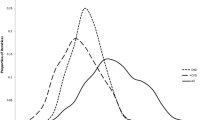Abstract
Objective: To estimate the costs and effect of implementing the National Service Framework for Coronary Heart Disease (CHD) in the UK.
Design: Decision trees were built on the results from randomised controlled trials on improving coronary revascularisation. All costs were presented in UK pounds (1997 values).
Patients: Each year 6600 new patients with CHD are expected to require revascularisation in the UK.
Interventions: The new patients would be equally divided into those undergoing coronary artery bypass grafting (CABG) and those undergoing a percutaneous coronary intervention (PCI) i.e., percutaneous transluminal angioplasty (PCTA). PTCA could be administered with or without abciximab (a glycoprotein IIb/IIIa receptor antagonist), stent, or stent plus abciximab (stent+).
Results: CABG/stent alone has an incremental cost of more than £115 489 per additional quality-adjusted life-year (QALY) gained compared with CABG/PTCA+. This high incremental cost is not attractive because if CABG/stent would be added to abciximab(CABG/stent+) its incremental cost-effectiveness ratio would be £2529 per extra QALY compared with CABG/stent. Therefore, the debate should not be limited to the issue of stents but it should focus on the need for administering abciximab in addition to stent. The 5-year direct costs of implementing such a strategy in the UK is expected to be £50.6 million (1997 values).
Conclusions: Abciximab and probably any glycoprotein IIb/IIIa receptor antagonists should be added to any PCI, especially if stents are used.










Similar content being viewed by others
References
Department of Health. National Service framework for coronary heart disease. London: Department of Health, 2000 Mar
Serruys P. Holding open the option for stents. Lancet 1997; 350: 498–502
Gandhi MM, Lampe FC, Wood DA. Incidence, clinical characteristics, and short-term prognosis of angina pectoris. Br Heart J 1995; 73 (2): 193–8
Henderson RA, Pocock SJ, Sharp SJ, et al. Long-term results of RITA-1 trial: clinical and cost comparisons of coronary angioplasty and coronary-artery bypass grafting. Randomised Intervention Treatment of Angina. Lancet 1998; 352: 1419–25
Lincoff AM, Califf RM, Moliterno DJ, et al. Complementary clinical benefits of coronary artery stenting and blockade of platelet glycoprotein IIb/IIIa receptors. N Engl J Med 1999; 341: 319–27
Topol JE, Marck DB, Lincoff AM, et al. Outcome at 1 year and economic implications of platelet glycoprotein IIb/IIIa blockade in-patients undergoing coronary stenting: results from a multicentre randomised trial. Lancet 1999; 354: 2019–24
Yusuf S, Zucker D, Oeduzzi P, et al. Effect of coronary artery bypass graft surgery on survival: overview of 10-year results from randomised trials by the Coronary Artery Bypass Graft Surgery Trialist Collaboration. Lancet 1994; 344: 563–9
Gold MR, Siegel JE, Russel LB, et al. Cost-effectiveness in health and medicine. New York: Oxford University Press, 1996: 284
Stinnet AA, Mittkeman MA, Weinstein MC, et al. The cost-effectiveness of dietary and pharmacologic therapy for cholesterol reduction in adults. In: Gold MR, Siegel JE, Russel LB, Weinstein MC, editors. Cost-effectiveness in health and medicine. New York: Oxford University Press, 1996
Haigh R, Castleden M, Woods K, et al. Management of myocardial infarction in the elderly: admission and outcome on a coronary care unit. Health Trends 1991; 23 (4): 154–7
O’Rourke RA. Reference cost-effective management of chronic stable angina. Clin Cardiol 1996; 19 (6): 497–501
Cleland JGF, Walker A. Is medical treatment for angina the most cost-effective option? Eur Heart J 1997; 18 Suppl. B: B35–42
Coronary artery stenting in the treatment of ischaemic heart disease, prepared for NICE by West Midlands Development and Evaluation Service. Birmingham: University of Birmingham, 1999 Dec
Shulper MJ, Seed P, Henderson RA, et al. Health service costs of coronary angioplasty and coronary artery bypass surgery: the Randomised Intervention Treatment of Angina (RITA) trial. Lancet 1994; 344: 927–9
Acknowledgements
The author is grateful to Peter West, Director of the York Health Economic Consortium for his suggestions.
No sources of funding were used to assist in the preparation of this manuscript. The author has no conflicts of interest that are directly relevant to the content of this manuscript.
Author information
Authors and Affiliations
Corresponding author
Rights and permissions
About this article
Cite this article
Vella, V. Potential Costs and Effects of the National Service Framework for Coronary Heart Disease in the UK. Pharmacoeconomics 21, 49–60 (2003). https://doi.org/10.2165/00019053-200321010-00004
Published:
Issue Date:
DOI: https://doi.org/10.2165/00019053-200321010-00004




